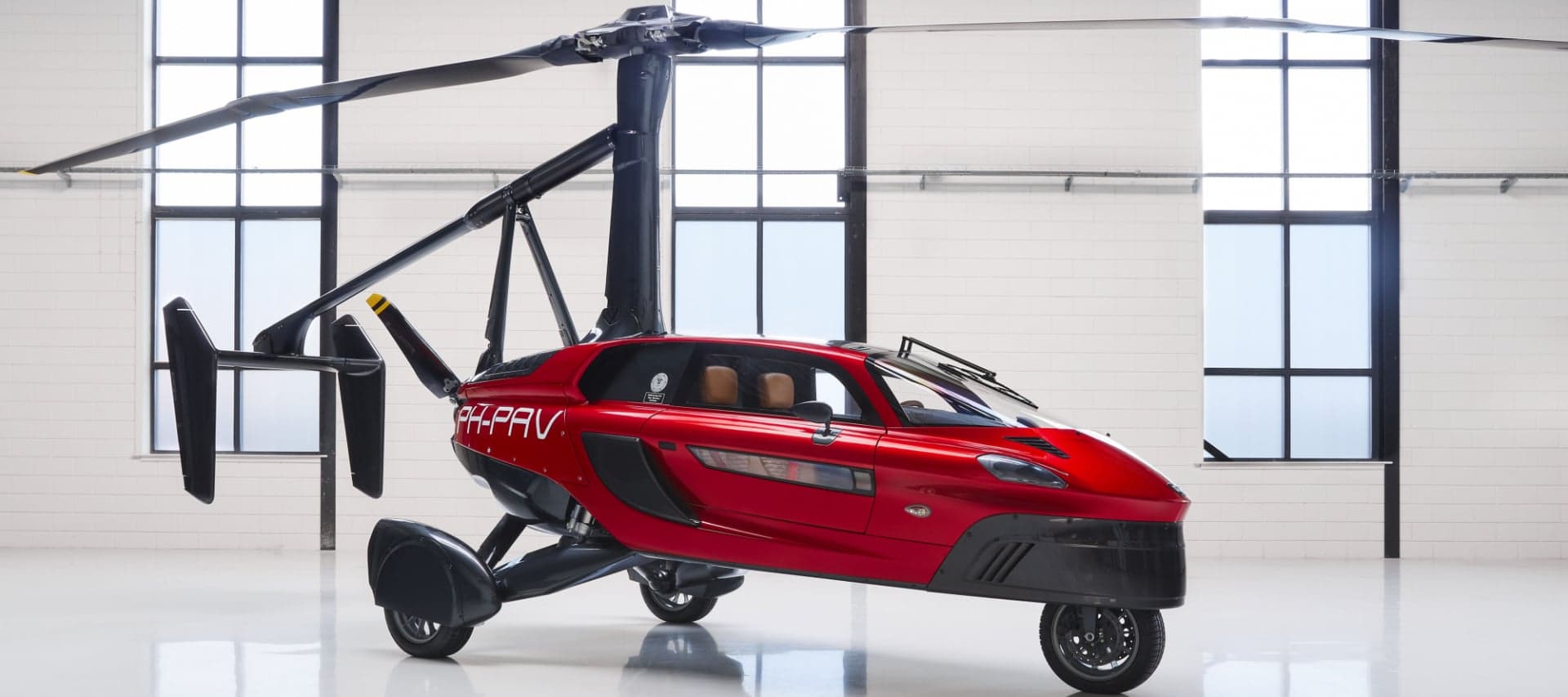Flying cars could take to the skies sooner than we think. Dutch company PAL-V intends to bring its four-wheeled aircraft, the PAL-V Liberty, to market by 2019.
As reported by Tech Crunch, the PAL-V Liberty was on display for the first time at the 2018 Geneva Motor Show in Switzerland, a sign of its impending release. PAL-V is taking pre-orders for the car/aircraft, and provided everything goes as planned, the company intends to proceed with deliveries by next year. The aircraft has already received certification from both the European Aviation Safety Agency (EASA) and the Federal Aviation Administration (FAA) in the U.S.
The PAL-V Liberty is designed to comfortably hold two passengers, and take off while carrying more than 908 kg (2,000 pounds). It can operate as both a car and an aircraft, and each mode would have different capabilities.
In car mode, it has a top speed of 160 km/hour (99 mph), and a range of 1,315 km (817 mph). In flight mode, its top speed increases to 180 km/hour (112 mph), and its range drops to 500 km (310 miles) — though that's with 30 minutes of reserve fuel and a single passenger.
Owners will need a pilot's license to take full advantage of the PAL-V Liberty, as well as access to a small landing strip or airfield. According to Tech Crunch, the transition from car mode to flight mode takes between five and 10 minutes.
While the PAL-V Liberty may be the first flying car to come to market, it certainly won't be the last. Shortly after its debut, we can expect to see Airbus's flying electric taxis shuttling people through the air, Toyota's flying car carrying the 2020 Olympic torch, and AirSpaceX's autonomous flying taxis debut in 2026.
While the ground transportation industry struggles to combat ever-increasing road congestion, taking to the skies might be the way of future. Soon, flying cars may be as ubiquitous as cars, planes, and trains as a means of easy traveling.
Share This Article
